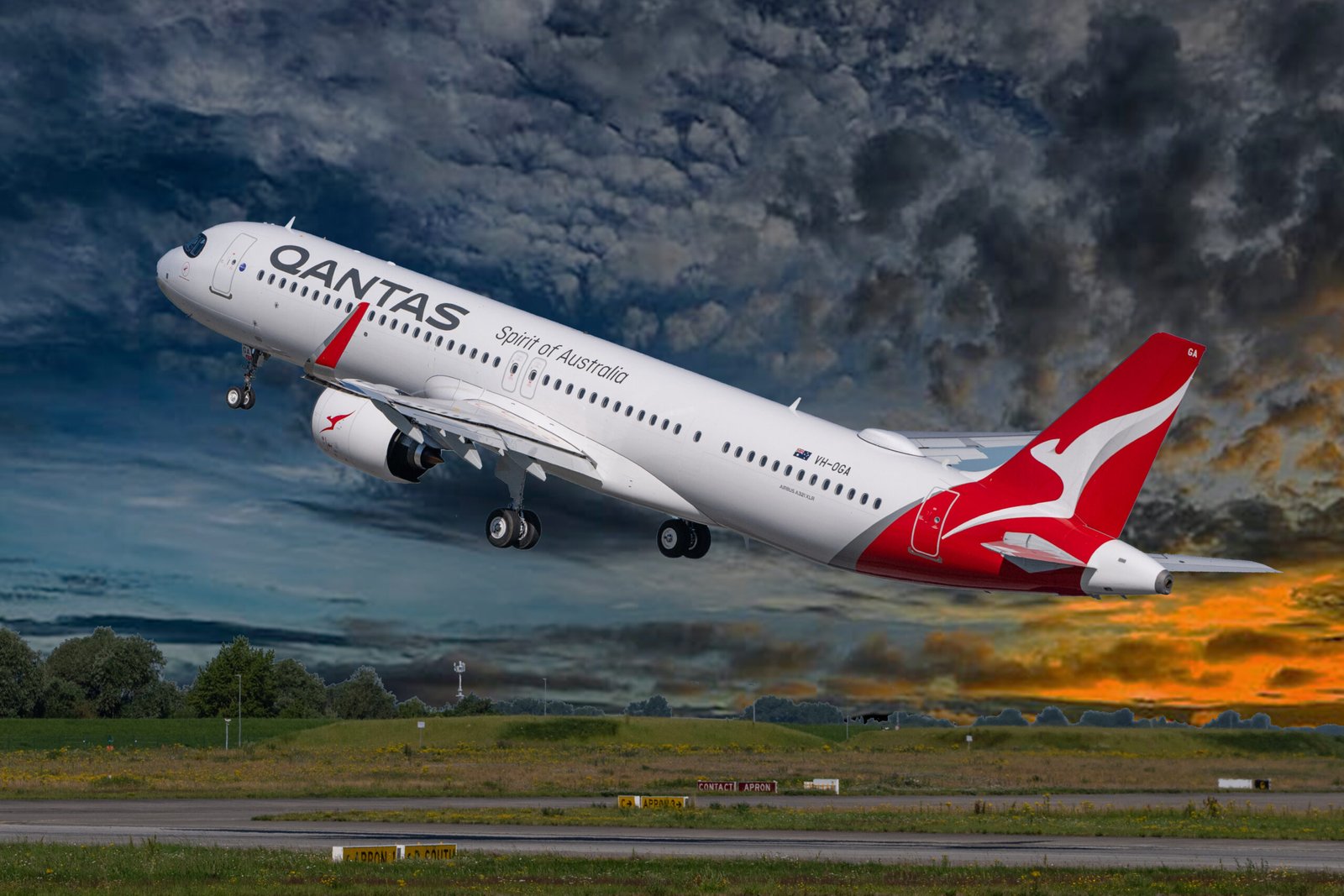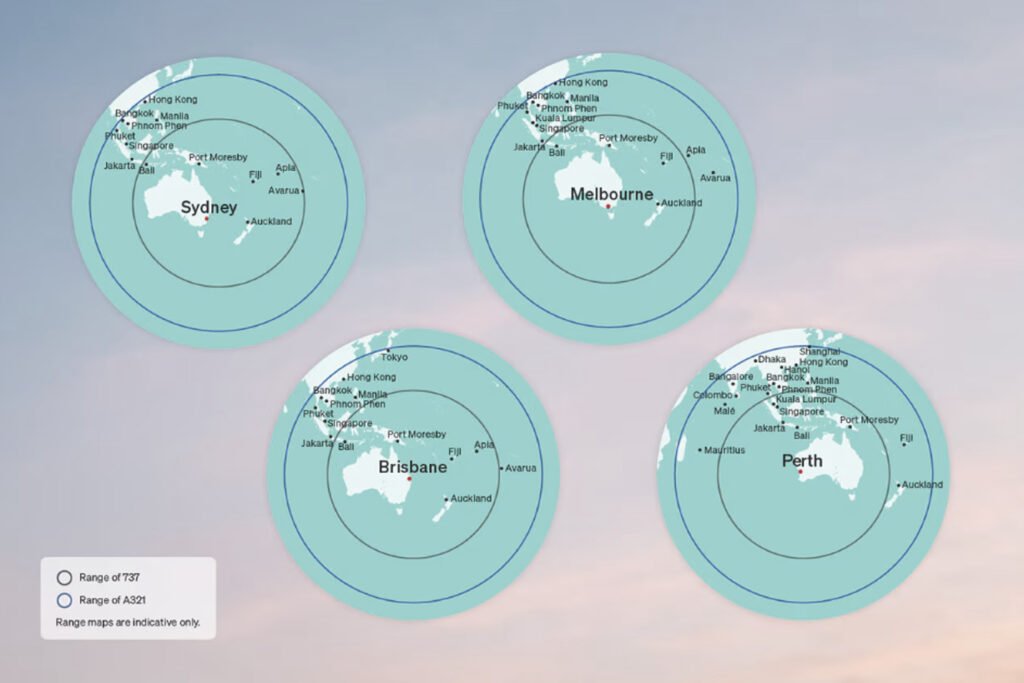
The vast Pacific Ocean lay beneath the wings of a new aircraft, emblazoned with the iconic Flying Kangaroo.
In July, Qantas celebrated a significant moment in its modern history, not with the roar of a widebody quad-jet, but with the arrival of its very first Airbus A321XLR. After its delivery flight from Hamburg, Germany, registration VH-IZA marked the beginning of a transformative “long narrowbody journey” for the Australian airline.
Beyond the “a321”: What Makes the A321XLR Special? The Airbus A321XLR (Xtra Long Range) is not just another single-aisle aircraft. It brings a major improvement in capability for the narrowbody segment. Building on the success of the A321LR,
The XLR features key upgrades:
Unprecedented Range: Its standout feature is a range of up to 8,700 km (4,700 nautical miles). This was achieved through a new, permanent Rear Centre Tank (RCT) built into the fuselage, which offers much more fuel capacity than previous models without sacrificing cargo space.
Efficiency: Thanks to the latest engine technology, aerodynamic design, and lightweight materials, the XLR uses significantly less fuel per seat than older widebodies or even newer ones on similar flight lengths. Right-Sizing: It carries about 200 passengers (in Qantas’s two-class layout: 20 Business, 168 Economy). This makes it perfect for routes where there is demand but not enough to justify the larger capacity (250–300 seats) of widebody jets like the A330 or 787. This opens up “long and thin” routes that were previously not viable.

Qantas’s Project Winton: The Strategy Behind this delivery of a321XLH is a physical sign of Qantas’s “Project Winton,” which focuses on renewing its fleet and expanding its network for domestic and short-haul international operations. This project differs from the ultra-long-haul Project Sunrise (A350-1000s) and aims to modernize the airline’s fleet backbone.
The A321XLR is key to this plan for several reasons:
Replacing the Boeing 737, it will mainly replace Qantas’s aging Boeing 737-800s, providing a huge improvement in passenger comfort, range, and efficiency on major domestic routes like Sydney, Melbourne, Perth, and Brisbane. Expect quieter cabins, larger overhead compartments, mood lighting, and updated inflight entertainment.
Unlocking New International Routes:
This is where the “Xtra Long Range” stands out. The XLR will let Qantas launch direct, point-to-point international flights from cities like:
– Brisbane to Singapore, Manila, or Jakarta: Skipping traditional hubs like Sydney.
– Melbourne to Bali or Auckland: With better efficiency and possibly more frequent flights.
– Perth to Jakarta or Denpasar: Improving Western Australia’s connections.
– Potentially East Coast Australia to Japan (e.g., Cairns-Tokyo) or the Pacific Islands: Routes that currently need larger aircraft or connections.
Domestic Efficiency & Frequency:
On busy domestic routes, the A321XLR’s capacity (slightly larger than the 737-800) along with its efficiency allows Qantas to carry more passengers economically, possibly freeing up other planes or increasing flight frequency.
Cost Competitiveness:
The much lower operating costs per seat compared to widebodies are crucial for competing on price-sensitive international routes and maintaining profitability at home against low-cost carriers.
What’s Next?
The arrival of the first aircraft ( named “Boonarga”) is just the beginning. Qantas has firm orders for 20 A321XLRs, with deliveries set to continue over the next few years. Before it enters passenger service later this year, this pioneering aircraft will undergo final cabin fitting and extensive crew training in Australia.
Initial flights will likely focus on major domestic routes, helping pilots, cabin crew, and ground staff get accustomed to the new aircraft. The excitement will grow as Qantas reveals the first international routes made possible by the XLR’s capabilities, likely targeting mid-to-late 2025. Network planners are certainly examining potential destinations where the combination of range, capacity, and cost makes direct service feasible for the first time or significantly more competitive.
A New Chapter Takes Flight The delivery of Qantas’s first A321XLR is much more than just adding another plane to the fleet. It signals the start of a well-planned strategic shift. This “long narrowbody journey” shows Qantas’s commitment to modernizing its core operations, improving domestic travel, and reshaping its short-haul international network by linking more Australian cities directly to key destinations in Asia and the Pacific.
The A321XLR, with its impressive mix of range, efficiency, and capacity, is the perfect tool for this mission. They will not just be carrying passengers; they will carry Qantas’s hopes for a more connected, efficient, and competitive future, one long, single-aisle flight at a time. The era of the long-haul narrowbody has truly begun for the Flying Kangaroo.
